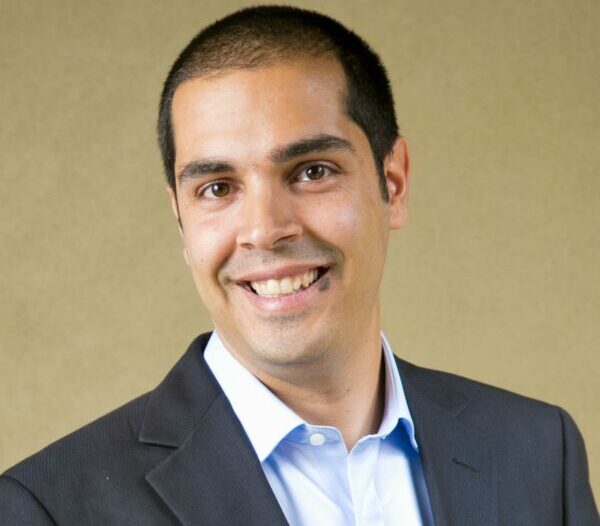INTERVIEW with Yoni Shiran, the lead author and Program Director of Breaking the Plastic Wave | SYSTEMIQ. For further expert opinions please use the question-level hyperlink.
As policies, technologies, brand owners, and consumer behaviour shift towards a new plastics economy, investors, unless they act fast, run the risk of being exposed to overvalued or stranded assets.
Plastic legislation is growing exponentially in speed and ambition, with over 350 pieces of legislation in the last 5 years alone. A number of clear legislative trends are emerging:
〉Bans on different types of plastic, including the EU Single-Use Plastic Directive which bans several types of plastics. Similar bans are being rolled out in Canada, China, India, and many other countries.
〉Incentive of using recycled content, both from mechanical and chemical recycling. For example, in the UK there are tax benefits for products that have 30% recycled content. In the EU there are tax benefits for plastic that gets recycled.
〉Extended Producer Responsibility (EPR) schemes which ultimately put accountability of plastic on producers.
Taken together, these trends translate into significant pressure on virgin plastic demand. Based on our estimates, if the world gets its act together on plastic, we could reach peak virgin plastic production by 2027. Additionally, we estimate that we can meet consumer demand in 2040 with 11% less virgin plastic than today, by shifting to recycled plastic, shifting to reuse/refill models and shifting to plastic substitutes. However, virgin plastic production growth is still seen as the engine of growth for a petrochemical industry potentially facing declining demand for oil in transportation and energy. This raises a very clear risk of creating a “plastic bubble” whereby new investments risk becoming stranded assets. This risk has been estimated by Carbon Tracker at $400b, in this report.
| Can plastic waste be seen as an investment opportunity?
Reducing approximately 80 per cent of plastic leakage to the ocean will bring to life a new circular plastics economy with major opportunities—and risks—for industry. Today, plastic pollution presents a unique risk for producers and users of virgin plastics given regulatory changes and growing consumer outrage. But it is also a unique opportunity for companies ahead of the curve, ready to unlock value from a circular economy that derives revenue from the circulation of materials rather than the extraction and conversion of fossil fuels. Large new value pools can be created around better design, better materials, better delivery models, improved sorting and recycling technologies, and smart collection and supply chain management systems. Under the System Change Scenario, we could fulfil the growing global demand for “plastic utility” in 2040 with roughly the same amount of plastic in the system as today, and 11% lower levels of virgin plastic production. This scenario essentially decouples plastic growth from economic growth.
Investors can seek to overcome the paucity of investable projects and perceived poor risk/return profiles by:
〉Focusing on developing a robust investment pipeline
Arguably there is sufficient capital to fund proven technologies and business models (at least in the high-income economies). The challenge is to find investors prepared to nurture and develop projects from the early ideas stage. The common refrain is that there is a “lack of pipeline” and that the new business ventures are premature and not ready for commercial finance. But the pipeline will not appear overnight. Many promising startups get stuck at the entrance to the “valley of death,” the no man’s land between developing an idea and actually getting it on the market. Seed funding in the form of grants, technical assistance, introduction to industry players, and guidance on which markets/solutions to prioritize should help scale innovation.
〉Developing specific investment vehicles
The type of investment vehicle will depend on the type of assets targeted (e.g., early stage technology with venture capital, or waste management infrastructure with institutional or development capital). The amount of capital required will depend on the strategy. Vehicles can combine blended/concessional capital (by development agencies, donors, climate funds, or philanthropy) to mitigate investor risk or to develop pipelines through project preparation facilities and technical assistance grants.
〉Analysing the commercial feasibility of various business models
A thorough review of credit profile, new technologies, and commercial market potential would help demonstrate the attractiveness of the solutions proposed under the System Change Scenario compared with traditional products and infrastructure.
〉Incorporating “plastic risk” in financial and environmental, social, and governance (ESG) assessments
As we shown in Breaking the Plastic Waste, the valuation of current plastic assets does not account for the fact that the expected industry growth is not aligned with the clean ocean agenda, commitment to a 1.5o C world, emerging societal and consumer trends, or changing government policies—all of which may have significant implications for financial performance. It is time for analysts and investors to account for these sector-specific developments—or “plastic risks”—in their company valuations. Investment banks, sustainability indices, and credit/ESG rating agencies could all play a role here. For example, there are already examples of credit ratings being punitive towards plastic packaging companies on the basis of increasing demand for recycled over virgin material and possible clean-up costs. A longer-term and more holistic approach to risk and impact trade-offs could be used, ensuring that plastic risk is not replaced by other risks, such as emissions and land use change.
| SYSTEMIQ and the Pew Charitable Trusts released the report ‘Breaking the Plastic Wave: A Comprehensive Assessment of Pathways Towards Stopping Ocean Plastic Pollution’ recently. Could you please elaborate on its key findings and the current trends?
〉Without action, the annual flow of plastic into the ocean will nearly triple by 2040, to 29 million tons per year, equivalent to 50 kg of plastic for every metre of coastline worldwide. This trend will have serious consequences for communities, ecosystems, and businesses.
〉Governments and industry leaders are stepping up with new policies and voluntary initiatives, but these are often narrow in focus or concentrated in low-leakage countries. By 2040, current government and industry commitments are likely to reduce annual plastic leakage to the ocean by only 7 per cent relative to BAU.
〉There is no single solution to end ocean plastic pollution. Upstream and downstream solutions should be deployed together. On their own, no “single-solution” strategy reduces annual leakage of plastic to the ocean even below 2016 levels by 2040, let alone near-zero leakage.
〉Industry and governments have the solutions today to reduce rates of annual land-based plastic leakage to the ocean by about 80 per cent below projected BAU levels by 2040, while delivering on other societal, economic, and environmental objectives. We estimate this is possible by reducing 30% of plastic demand under BAU, substituting 17%, and significantly scaling up recycling.
〉Tackling the remaining 5 million tons per year of plastic leakage demands significant innovation across the entire plastics value chain. Achieving the vision of near-zero ocean plastic pollution will require technological advances, new business models, significant spending, and, most crucially, accelerating upstream innovation.
〉The System Change Scenario is economically viable for governments and consumers, but a major redirection of capital investment is required. The present value of global investments in the plastic industry between 2021 and 2040 can be reduced from US$2.5 trillion to US$1.2 trillion, but the System Change Scenario will require a substantial shift of investment away from the production and conversion of virgin plastic, which are mature technologies perceived as “safe” investments, to the production of new delivery models, plastic substitutes, recycling facilities, and collection infrastructure, some of which are less mature technologies and perceived as riskier.
〉Reducing approximately 80 per cent of plastic leakage to the ocean will bring to life a new circular plastics economy with major opportunities—and risks—for industry. Today, plastic pollution presents a unique risk for producers and users of virgin plastics given regulatory changes and growing consumer outrage. But it is also a unique opportunity for companies ahead of the curve, ready to unlock value from a circular economy that derives revenue from the circulation of materials rather than the extraction and conversion of fossil fuels. Large new value pools can be created around better design, better materials, better delivery models, improved sorting and recycling technologies, and smart collection and supply chain management systems. Under the System Change Scenario, we could fulfil the growing global demand for “plastic utility” in 2040 with roughly the same amount of plastic in the system as today, and 11% lower levels of virgin plastic production. This scenario essentially decouples plastic growth from economic growth.
〉A system change would require different implementation priorities in different geographies and for different plastic categories. Flexible packaging (bags, films, pouches, etc.) and multilayer and multimaterial plastics (sachets, diapers, beverage cartons, etc.) account for a disproportionate share of plastic pollution compared with their production.
〉Addressing plastic leakage to the ocean under the System Change Scenario has many co-benefits for climate, health, jobs, working conditions, and the environment, thus contributing to many of the United Nations Sustainable Development Goals. The scenario results in 25 per cent (±11 per cent) lower plastic-related greenhouse gas (GHG) emissions in 2040, although still an increase relative to today. Peak virgin plastic production is reached by 2027. In addition, net direct employment in the plastics value chain increases by 700,000 jobs, almost all of them in the Global South.
〉The time is now: If we want to significantly reduce plastic leakage, we have the solutions at our fingertips. An implementation delay of five years would result in an additional ~80 million tons of plastic going into the ocean by 2040.
It is not the lack of technical solutions that is preventing us from addressing the plastic pollution, but rather inadequate regulatory frameworks, business models, and funding mechanisms. We have the solutions at our fingertips: If we want to significantly reduce plastics in our oceans, the time to act is now.
In the System Change Scenario, paper, coated paper, and compostable materials can substitute 17% of plastic waste generated by 2040, equivalent to 71 million tons of plastic, without fundamentally decreasing the performance, affordability, or social and environmental acceptability of packaging and single-use items. 95% of this potential substitution comes from six key product applications for which known material alternatives already exist at some level of scale: monomaterial films; other rigid monomaterial packaging; sachets and multilayer films; carrier bags; pots, tubs, and trays; and food service disposables. All substitutions need careful management at end of life and have varied environmental impacts. They create opportunities, risks, and trade-offs that must be carefully managed and assessed on a case-by-case basis. The Substitute system intervention has 1.7-2 times higher production costs than virgin plastic per ton of plastic utility, so substitutes were selected only when they replace plastic that cannot be reduced or mechanically recycled. The intervention plays an important role in minimizing ocean plastic pollution and could help reduce overall GHG emissions.
| brief bio
Yoni Shiran is the lead author and Program Director of Breaking the Plastic Wave, a comprehensive assessment of pathways towards stopping ocean plastic pollution. Yoni leads the Plastic platform at SYSTEMIQ where they work with governments, industry and investors to enable system change at a global and national scale. Before SYSTEMIQ, Yoni spent 6 years at McKinsey working on a variety of circular economy projects. Yoni holds an MBA from UC Berkeley.
| about
SYSTEMIQ is a Certified B Corporation1 set up to lead system-level change in collaboration with pioneering institutions, investors, and businesses. SYSTEMIQ’s vision is a thriving planet where sustainable economic systems drive prosperity for all. Their mission is to catalyse good disruptions in economic systems to keep global warming to a maximum of 1.5°C and speed the achievement of the UN Sustainable Development Goals (SDGs). Since their founding in 2016, SYSTEMIQ has been deeply involved in the development of circular economy thinking and ways to combat marine plastic pollution, globally and in Indonesia. Through Breaking the Plastic Wave, a project they have led in partnership with The Pew Charitable Trusts, SYSTEMIQ has developed a deep understanding of the global plastic system dynamics, drivers and solutions. They have quantified the economic, environmental, and social implications of different solutions across the value chain and in specific geographic archetypes and plastic archetypes in a granularity that has not been done previously. SYSTEMIQ has nearly 200 colleagues across offices in London, Munich, Amsterdam, Jakarta and Sao Paulo.
1 Certified B Corps are a new kind of business that balances purpose and profit. They are legally required to consider the impact of their decisions on their workers, customers, suppliers, community, and the environment.










